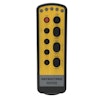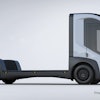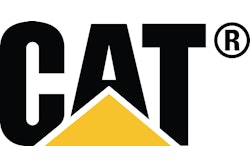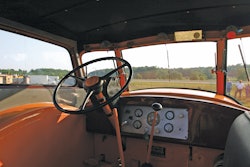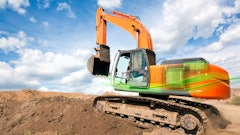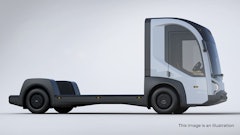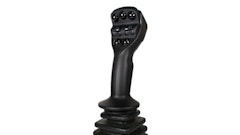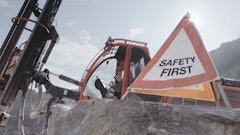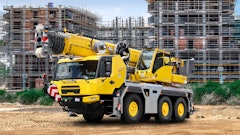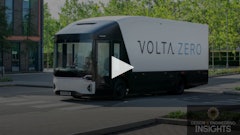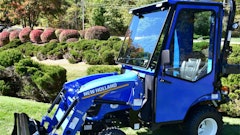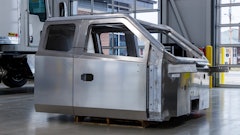Bergstrom Inc. was founded as a heating system manufacturer for mobile equipment in 1949, and over the years grew to become a supplier of complete systems that provide operator comfort in off- and on-highway vehicles.
With OEMs becoming increasingly interested in buying complete systems from their component suppliers, assembling complete cabs was a natural step for the Rockford, IL, company. That's what it is doing at Bergstrom's Contract Assembly Services facility, located just north of I-80 in Joliet, IL. When the assembly program started, one of Bergstrom's goals was to differentiate itself from its competitors and be viewed as a value-added supplier. The cab program has helped Bergstrom do just that.
"Building cabs gives us a closer relationship with our customers on the HVAC side of the business," says Gus Anton, general manager, Cat Global Sales, Bergstrom Inc. "We are confident that, as we grow the cab business, it will provide additional opportunities on the contract assembly side and the air conditioning side, as well."
In 1996, Caterpillar Inc., Peoria, IL, began working on a strategy for its cab design and manufacturing business. Caterpillar had worked with Bergstrom since the 1950s, and it approached Bergstrom to see if it would be willing to assemble cabs.
Previously, the cabs for Caterpillar's different business units — such as the mining operation in Decatur, IL, or track-type tractors in East Peoria, IL — were designed and sourced by the individual groups. That's changed over the past couple of decades, as Caterpillar has worked to leverage some of the assembly operations to provide a Caterpillar cab, with common seats, joysticks, and other operator interfaces.
"Leveraging that production base has a cost benefit, too," says Tom Holt, Cat Electronics Operator Environment/Interface product manager. "Rather than have the track-type tractor group building a machine and sourcing cab components independently, everyone can pull from a common pool. There was an opportunity to capitalize on some synergies, and we had a quality group in Bergstrom to do the assembly."
"We looked at the Bergstrom organization and how they developed their people and how they developed the processes to build their products," says George Formenti, operations manager, Caterpillar Cab Assembly Operation. "Bergstrom's Mastery program helps develop people on the shop floor who must meet certain expectations in order to maintain their Mastery level. We also looked at what they do for process control; they create CAPP sheets (computer-aided process procedure sheets) to assemble product."
Caterpillar moved the assembly line for one of its simpler cabs and installed it in Bergstrom's Rockford facility for nine months as a trial test.
"After that test period, Bergstrom knew it wanted to get into the business, and we were comfortable with the quality of the cabs and the way they had trained their people, so we decided that we both wanted to pursue this opportunity," says Formenti.
Bergstrom relocated its cab assembly business to a new facility in Joliet during the winter of 1998. That facility has grown to where it now covers 207,500 sq. ft.
"I believe part of our success is based on the fact that we had a good transition plan to ramp up," says Anton. "George's staff assisted in transferring the direct product knowledge to our team over the course of about a year, and it was almost two years to get all the products moved into the building. We worked in a methodical way to ensure that we met the quality levels and delivery performance expectations for Caterpillar during that transition. The goal was a ‘seamless' transition from the prime product plant's perspective."
Today, Bergstrom's Joliet facility is producing cabs for three of Caterpillar's plants, those in Decatur, East Peoria, and Aurora, IL. In terms of equipment, that includes scrapers, rigid frame haulers, motor graders, track-type tractors, and large wheel loaders.
"In the last three years, Caterpillar has consolidated the cab design, so the majority of the cabs that are designed go through the same group within engineering," says Formenti. "Our operation reports to the design group. Caterpillar's cab group manager has responsibility for the design of the cabs in one group and the assembly of the cabs in another group. With that, we can achieve a common look and feel within the new cabs that Caterpillar is developing."
Communication continues as the cab reaches production. The Joliet operation provides feedback to the design group on areas where it could communize parts as the cabs go through the assembly processes. If Bergstrom's employees see things that are similar but have different part numbers, they work with Caterpillar to drive commonality back into the new designs so costs can be kept in check.
As the assembly operation continues to be perfected, there are opportunities to work with other equipment manufacturers as well. "Part of our strategy is to be competitive internally and also with the outside market, so we can grow the OEM business," says Formenti. "We have a few customers we're dealing with, and we're moving toward developing more customers in OEM cab assemblies." One of the program's current customers is specialty equipment manufacturer Kress Corp., in Brimfield, IL.
Those OEM customers would be viewed as Caterpillar's customers, but Bergstrom would assemble the components in Joliet, so it helps Bergstrom, as well. In the end, the real goal is to help make the people who are buying and using the machines more comfortable and more productive.
The cab work includes another Caterpillar business, Cat Electronics. "A lot of the components that go into the design of the cabs these days are electronic and electrical: switches, controls, etc., which is owned by Cat Electronics," says Holt. "The cab design group is part of that division. There are a lot of synergies that go along with the entire design concept."
Caterpillar and Bergstrom employees work to support the assemblers who are building the products.
"I think what's unique with our arrangement here is that we have two separate companies that are working toward a common goal," says Anton, "to build a cost-effective, high-quality cab and deliver it to our OEM customers' schedule and expectation."


